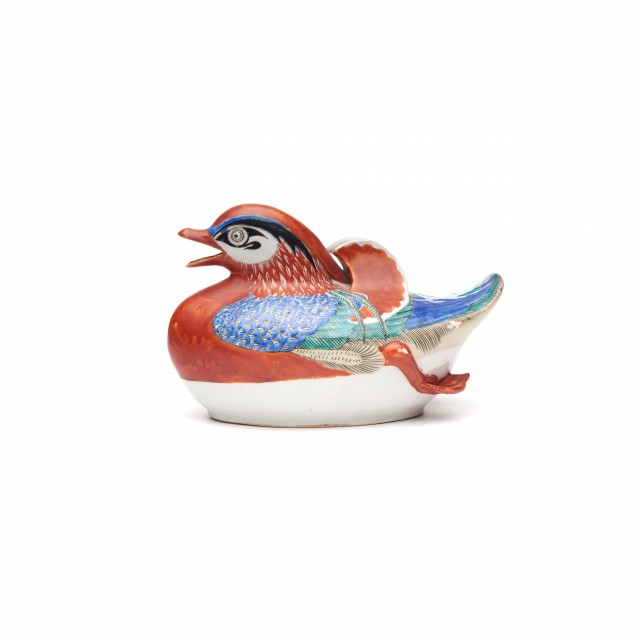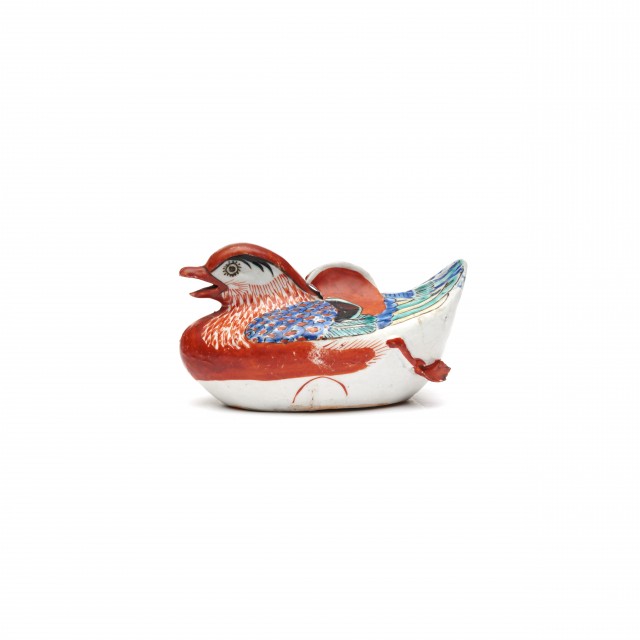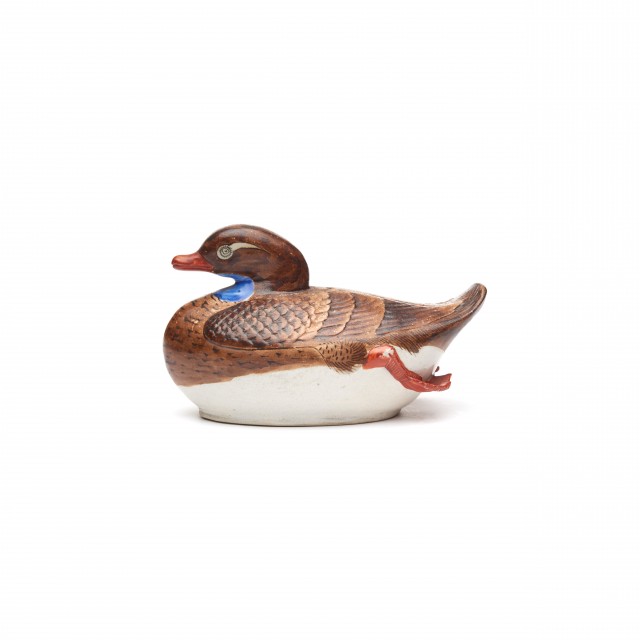Three Mandarin Ducks

Photography by Synthescape, Digital image © Asia Society

Photography by Synthescape, Digital image © Asia Society

Photography by Synthescape, Digital image © Asia Society
Three Mandarin Ducks
Late 17th-early 18th century
Japan, Saga Prefecture
Porcelain painted with overglaze enamels, the hen with glaze and brown enamel on biscuit (Arita ware, Kakiemon style)
Drake, H. 4 1/2 x L. 7 5/8 x W. 4 1/2 in. (11.4 x 19.4 x 11.4 cm); Hen, H. 4 1/4 x L. 7 1/4 x W. 4 1/4 in. (10.8 x 18.4 x 10.8 cm); Duckling, H. 2 3/4 x L. 4 3/4 x W. 2 3/4 in. (7.0 x 12.1 x 7.0 cm)
Asia Society, New York: Mr. and Mrs. John D. Rockefeller 3rd Collection, 1979.242.1-3
Licensing inquiries
This trio of mandarin ducks represents a popular type of mold-formed, enameled ceramic statues. The hen is differentiated by her brown coloring, less flamboyant than the combination of red, green, blue, and yellow of the drake and duckling. It has been suggested that the porcelain ducks made in Arita, although they are nonfunctional, may have been based on bird-shaped incense boxes popularized by ceramic workshops in Kyoto. These mandarin ducks, like the porcelain lion-dogs, were probably intended primarily for the European market.



